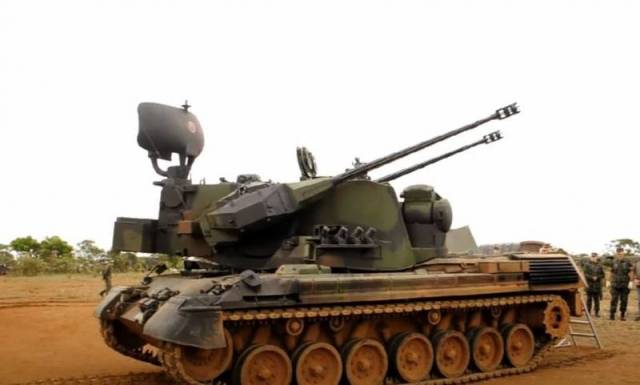
Image source: topwar.ru
Ukraine was left without self-propelled anti-aircraft guns Gepard 1A2, removed from the Bundeswehr more than 20 years ago. According to Welt, Berlin has not been able to ensure the supply of anti-aircraft guns to the Ukrainian army.
The German edition, citing a source in Kiev, reported that the Ukrainian army did not receive the Gepard 1A2 self-propelled anti-aircraft guns promised by Germany, about which so much has been said recently. Although the delivery itself was announced in mid-April, and German Defense Minister Christine Lambrecht even announced it was almost completed, in fact, all the installations remained in the warehouses of the manufacturer Krauss-Maffei Wegmann, where they were stored after decommissioning.
As explained in Kiev, the Germans have not been able to find the necessary amount of ammunition for Oerlikon GDF automatic guns, and the available stock of 23 thousand shells for all installations is not enough for one battle. In general, Berlin has 30 Gepard 1A2 ZSU and a great desire to dump all this to Ukraine, but there are no ammunition that are produced in Switzerland. And according to Swiss laws, it is prohibited to supply weapons, etc. to the countries on whose territory there are hostilities.
As already reported, the Gepard 1A2 self-propelled gun is equipped with 35 mm Oerlikon GDF automatic guns for a 35x228 mm projectile, which is manufactured in Switzerland. There was information that Germany allegedly agreed with Brazil to supply 300 thousand shells to its ZSU, and is also negotiating with Qatar and Jordan for another 150 thousand, but judging by the developing events, these are only rumors. Although it may be true. But on the other hand, even this amount of ammunition will not save the situation. For the effective use of installations, it is necessary to have a permanent source of ammunition replenishment, not a one-time one.
As previously reported, the Gepard 1A2 ZSU has a firing range of up to 5 km, and an altitude of up to 4 km, the radar detects targets at a range of up to 18 km. At the same time, the installation does not have the ability to deal with modern air threats, which is why it was decommissioned.
